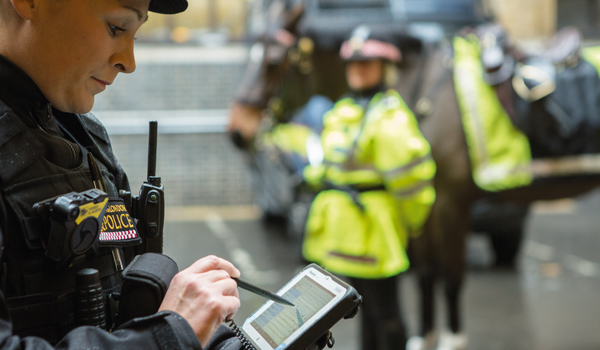Innovation being ‘put at risk’
The Information Commissioner’s Office (ICO) has demanded a new statutory code to govern the police use of “invasive” facial recognition technology, which it says is a potential threat to the public’s privacy.
Information Commissioner Elizabeth Denham said an ICO investigation into the use of live facial recognition (LFR) by the Metropolitan Police Service and South Wales Police had raised “serious concerns about the use of a technology that relies on huge amounts of sensitive personal information”.
She added: “We found that the current combination of laws, codes and practices relating to LFR will not drive the ethical and legal approach that’s needed to truly manage the risk that this technology presents.”
A court case was launched against South Wales Police use of facial recognition this year, while 18 politicians signed a petition to stop its use, resulting in many trials of the technology ceasing nationwide.
The High Court ruled in September that South Wales Police did not breach data protection laws by using facial recognition software – the first legal case of its kind – but Ms Denham said the police should “seek to raise the standards [of data protection] beyond those set out in the judgment” in certain situations to “ensure public confidence in this technology”.
“Police forces halting facial recognition trials due to public backlash is a huge step backwards and puts innovation at risk,” said Jason Tooley, chief revenue officer at biometric authentication firm Veridium.
“There is increasing concern in the community that regulators such as the ICO will take too much of a heavy-handed approach to regulating the technology, and we must absolutely ensure innovation is not being stifled or stopped. It’s in the public interest for police forces to have access to innovative technology such as biometrics in order to deliver better services and safeguard our streets.”
Mr Tooley said that with police forces under increasing funding pressures, biometrics could improve the quality and efficiency of policing while reducing costs.
“The use of biometrics can support identity verification on-demand and at scale, which has been seen abroad where officers currently leverage widely adopted consumer technology,” he added.
However, Mr Tooley said it was imperative forces take a strategic approach to trials without giving precedence to a single biometric technique.
“Using other biometric techniques that have greater levels of acceptance, such as digital fingerprinting, will ensure a higher level of public consent due to its maturity as an identity verification technique,” he said.
“Considering the rapid rate of innovation in the field, adopting an open biometric approach that enables the police to use the right biometric technique for the right scenario, taking into account varying levels of maturity, will see the benefits associated with digital policing accelerated.
“If the police adopt a transparent policy on how biometric data is interpreted, stored and used, the public’s data privacy concerns can be greatly alleviated, which will in turn trigger consent and wider acceptance.
“Managing expectations around biometrics and how the technology will be used is crucial, especially in surveillance cases. Concerns over data privacy can also be eliminated if sensitive biometric data is stored in the correct way, using sophisticated encryption methods that render it unusable to a hacker.”




